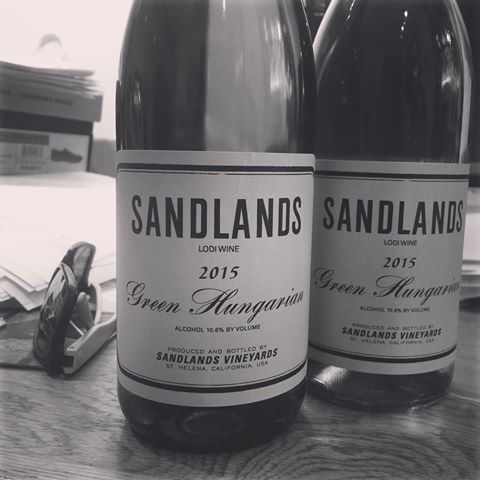Every week I try a wine made 100% from an unusual varietal I have never had before. I prefer if I have never even heard of it before. Let’s use this thread to share about our experiences with any unusual varietals you’ve tried.
Notes from my past couple months:
Petite Arvine: This a Swiss white grape. This white wine came from an Italian winemaker (with French heritage) on the Swiss border. How’s that for unsual? This had lovely aromatics with apple and almost tropical fruit, but a very clean body and crisp (not tart) finish. It was a perfect substitute for those who love Sauv Blanc but have gotten bored and are looking for another non-oaky, non-buttery wine what has enough going on to hold your interest and pairs very well with similar foods as sauv blanc. Everyone enjoyed this. Nothing special here, but enjoyable.
I found a nice write-up on the varietal here: Fringe Wine: Petite Arvine - Valle d'Aosta, Italy and Vétroz, Switzerland
(Wine drank: Grosjean Vallee D’Aoste Petite Arvine)
Fiano: White Italian grape from Tuscany region that is rumored to have been popular among the Romans. Well, I can see why. I am yet to find a single wine drinker who doesn’t like this winemaker’s Fiano. It splits the difference between a creamy chardonnay, and a floral torrontes and tropical fruited chenin blanc while not going too far towards any extreme. Still crisp and clean, not bitter nor sweet. Absolute winner of a ‘bring a wine to a party’ if it’s for curious wine geeks or just has to please everyone (I even had a friend who dislikes white wine say he liked this). Highly recommend this, especially for the value under $20.
(Wine drank: Otto Muri Toscana Fiano)
Saperavi: My favorite find. Saperavi is an indigenous grape from one of the world’s oldest wine regions, the Republic of Georgia (been making wine for 8000 years – do any of you have a 7014 BC vintage in your cellar?). Not only is this a cool grape, but the production method is unique. This is made the ancient way, in massive clay qvevris buried underground. The wine itself was amazing, bursting with powerful black fruits and pepper, tobacco… all my favorite things about Syrah at a fraction of the price. On New Year’s Eve, after we polished off a magnum of Palmaz I opened this as an experiment and guess what, it was still pretty good by comparison which is saying a lot when you go from a $200 wine to a $20 wine. Even more impressive, we pumped the half-finished bottle and discovered it two weeks later in the back of the fridge and it was fantastic. Mocha notes emerged and softer blackberry fruit notes. As we speak, I have a bottle of this decanting for non-wine snob friends who are coming over for dinner. They will love it. Plus I get to tell them it’s amazing history. Word of warning, I tried a couple other winemaker’s Saperavi and was disappointed. I think quality and standards vary GREATLY over there.
A bit about their qvevri winemaking technique: Vinoterra - Georgian Wine House | Georgian Wine Importers
(Wine drank: Vinoterra Saperavi, Wine & Spirits gave this 90 points, which I didn’t know until I just googled it for this thread, but I’d go 91 points)
Grolleau: Red. Lovely purplish color and spry fruity nose, but tasted a bit tart and funky at first. The next day it grew less tart but also lost it’s fruity nose. Drank a bit like a Mollard or young Gamay in that it is freshest and fruitiest at the outset which tempts one to drink it while it’s lively, but then that off-putting tartness and funk has to be something you like.
(Wine drank: Pithon-Paillé Grololo)
Okay, I included some of my ‘winners’ so here was a big ‘loser’ in my experiments…
Listan Negro: Red grape grown in black volcanic pits in the Canary Islands, this one smelt like hot asphalt and tasted horrendous and sulphurous upon opening. Everyone who tried it found it completely unapproachable. Considered the copper penny trick but instead I wanted to see what happened if we left it for a ay or two. Some of that aroma and flavor did lessen, and under was tart red fruit and a core of black mineral – but it was still unpleasant enough to drink that we never made it through the bottle.
(Wine drank: Bodega Los Bermejos red)
(Apologies if an old thread already addresses this. I searched and didn’t see one.)
So which unusual grape varieties have you tried? Which do you want to try?
